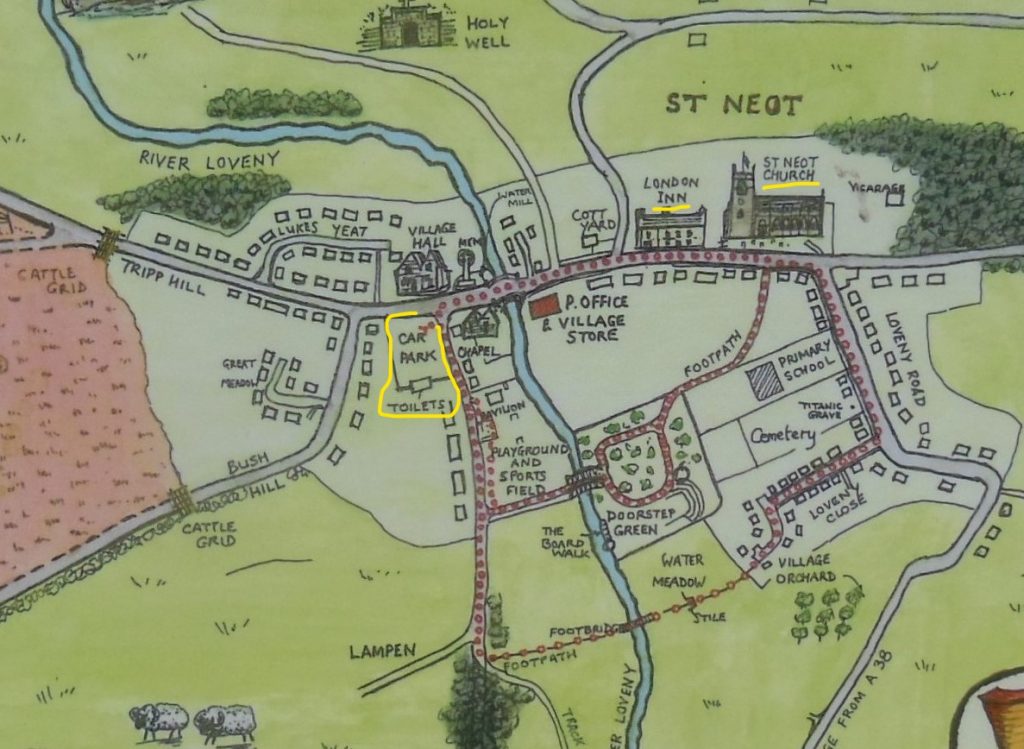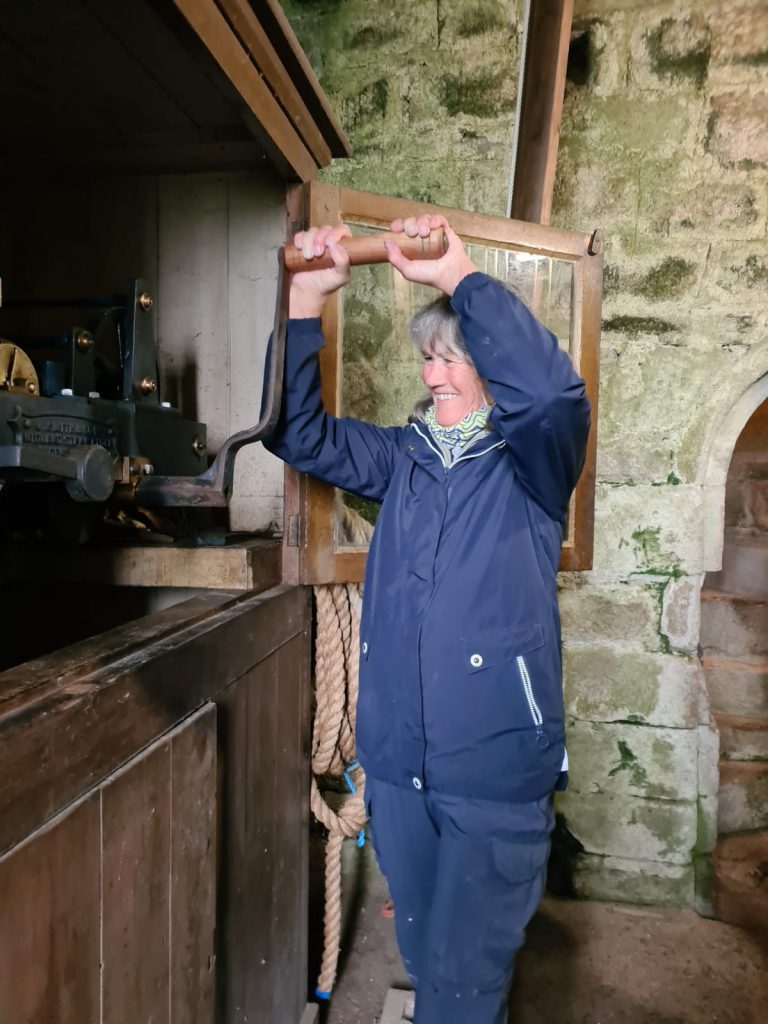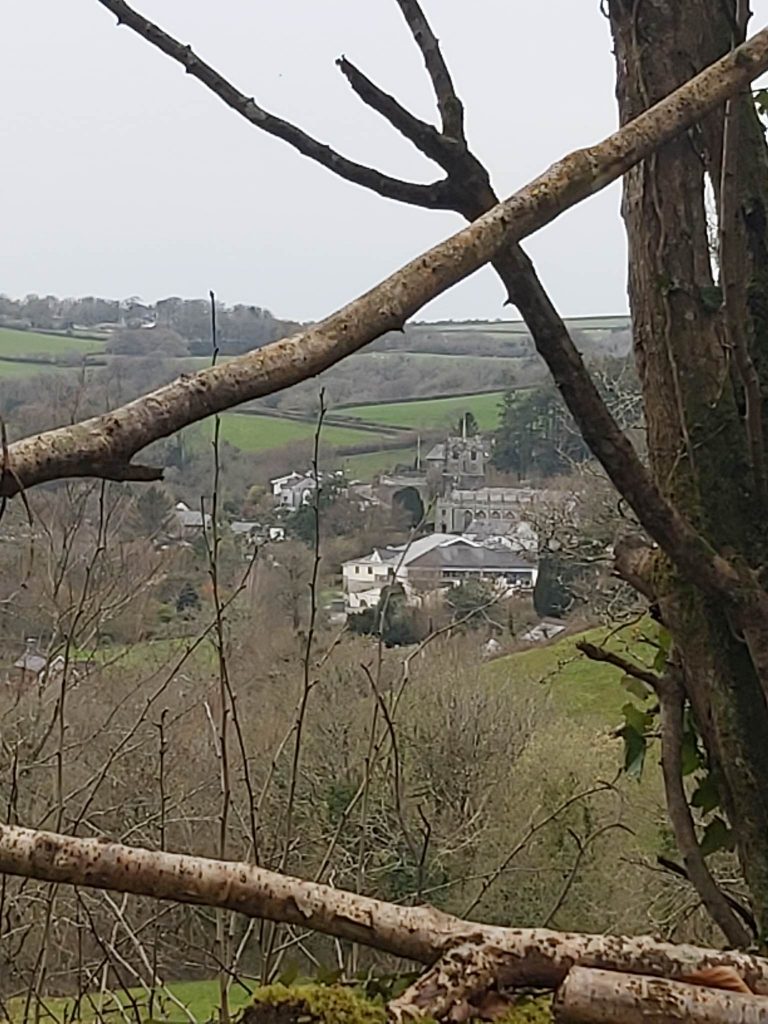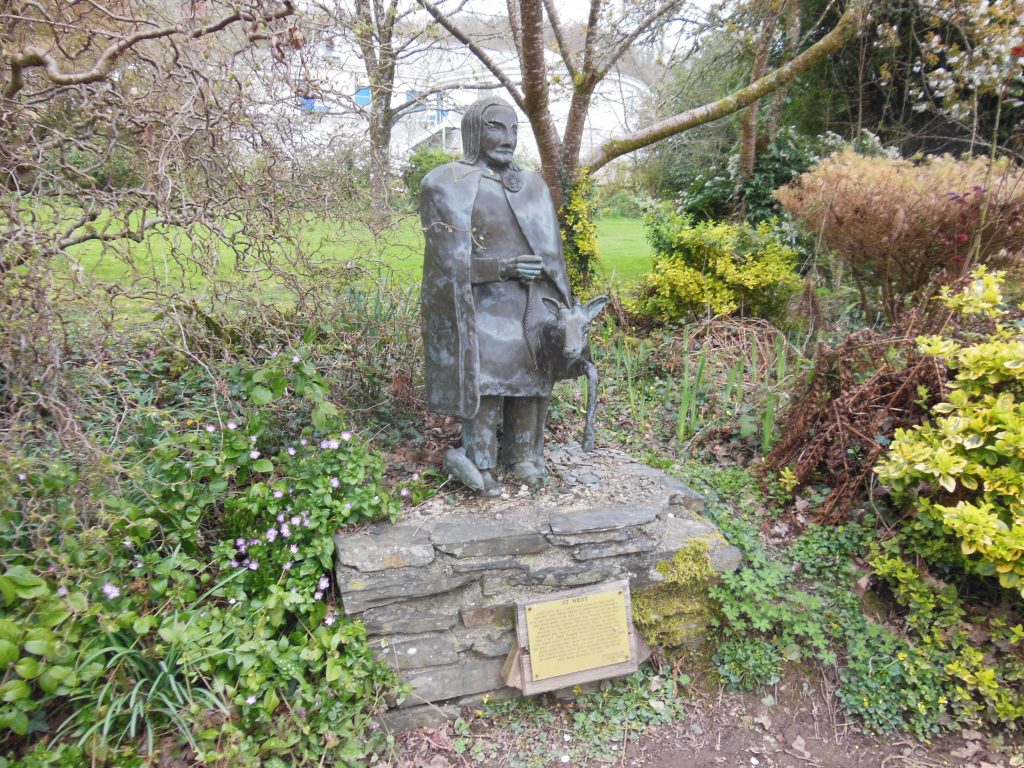

Park in the car park opposite the social club/village hall, at 9:50am, walk via Saint Neot to the church to meet the bell tower captain. Let me know if you intend to join us. So we don’t leave anyone behind. There maybe an opportunity to shortened the walk if needed. There are toilets at the start/finish car park and at the church and pub.
If you want to join us… I look forward to hearing from you. Ali. 07305 044049





In the earliest Life of St Neot (written in the mid-eleventh century, perhaps by a Cornishman, but anyway for St Neots in Huntingdonshire), the saint is portrayed as an Anglo-Saxon, who studied first at Glastonbury, then retired to Cornwall to become a hermit. It is this Life which first tells the story of King Alfred and the Cakes, in Somerset (a story which is not in Asser’s Life of King Alfred). Although St Neot is here said to have been a Saxon, nothing is known for sure of his actual origin. All that we know is that he was buried at St Neot, probably between about 865 and 893, and that his remains were later taken to St Neots in Huntingdonshire.
The one thing which is sure is that he actually visited St Neot and remained grateful for the relief from illness which he received through praying at the shrine of St Gueriir here. This happened before he became king of Wessex (while one of his three elder brothers was still on the throne), but while the sub-King Dungarth was still ruling Cornwall, who may be commemorated on the stone in St Cleer parish nearby. One of Dungarth’s courts would have been at Liskeard, of which the name implies a court (Cornish lys), possibly ‘of stags’ (Cornish kerwys, older kerwyd); in the later Middle Ages there were two royal deer-parks in Liskeard parish. King Alfred was on a hunting visit when he visited St Neot. Was he on a royal visit to the sub-king Dungarth, staying at Liskeard and being entertained there?
The cross of Doniert and the large cross outside the door of St Neot church are both in the new style of ornamented cross, introduced into Cornwall in around 900. This means that the one would be of about the right date for ‘Doniert’ to refer to King Dungarth (it is a variant spelling of the same name); and the other would be of the right date to have been presented to the church by King Alfred in gratitude for the help that he received from St Gueriir’s shrine there. If St Neot died during King Alfred’s reign, he might already have been living at St Neot, and might have shared in the king’s gratitude. So it is possible that this cross at the church was given to us by King Alfred. TY Kate.